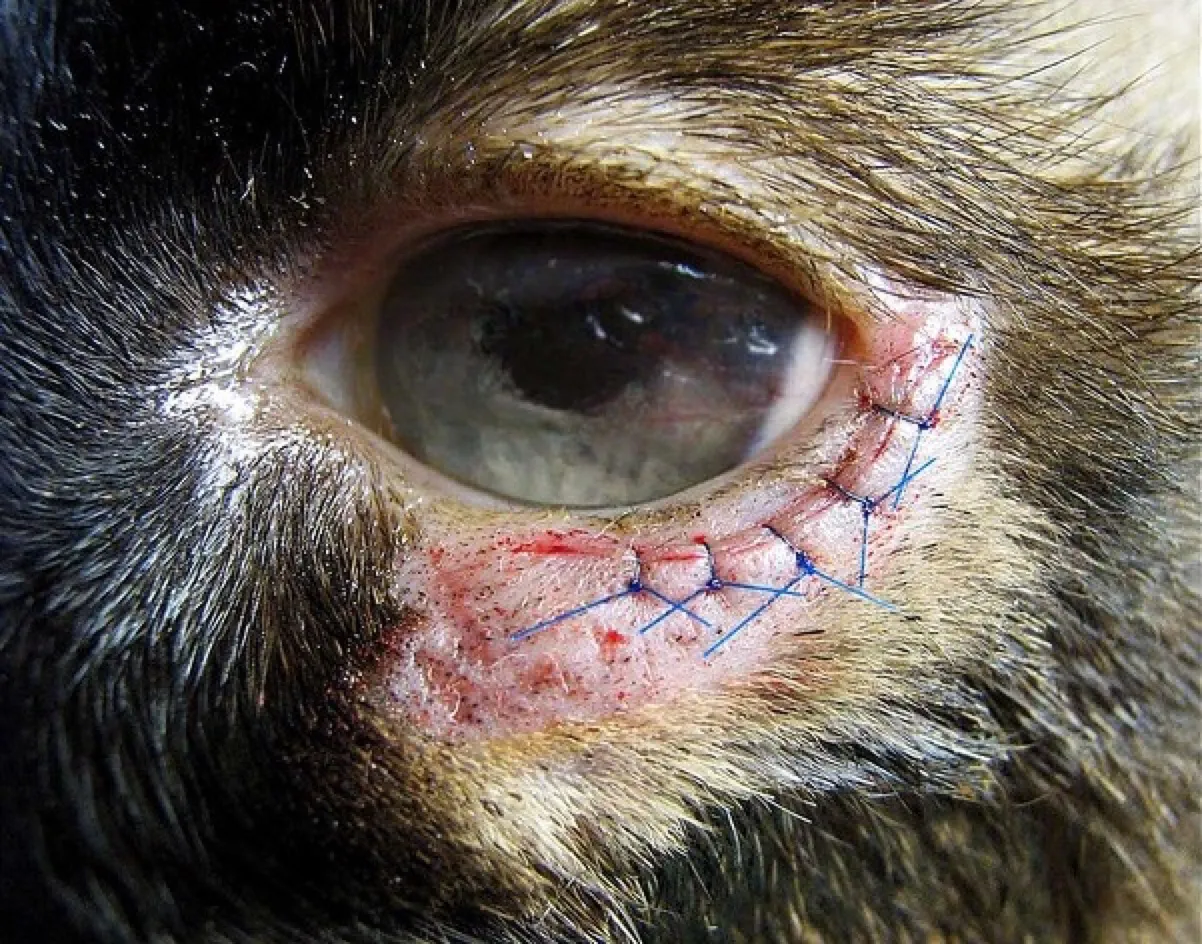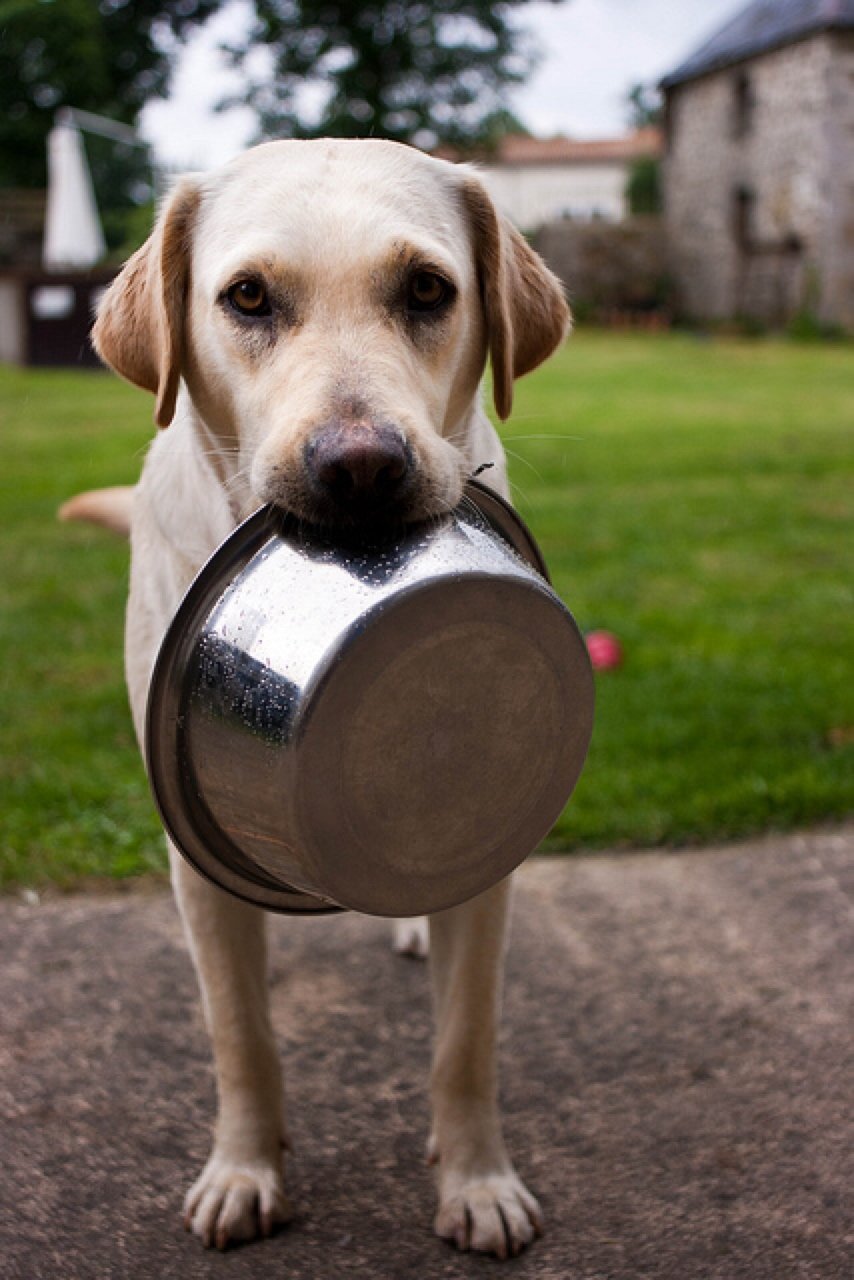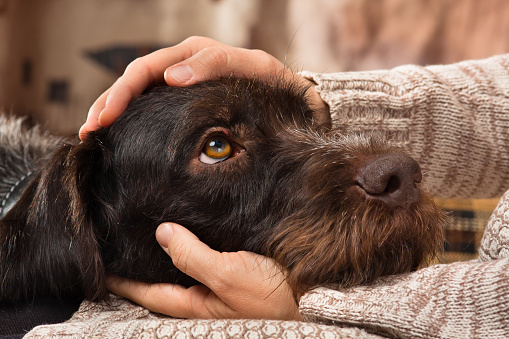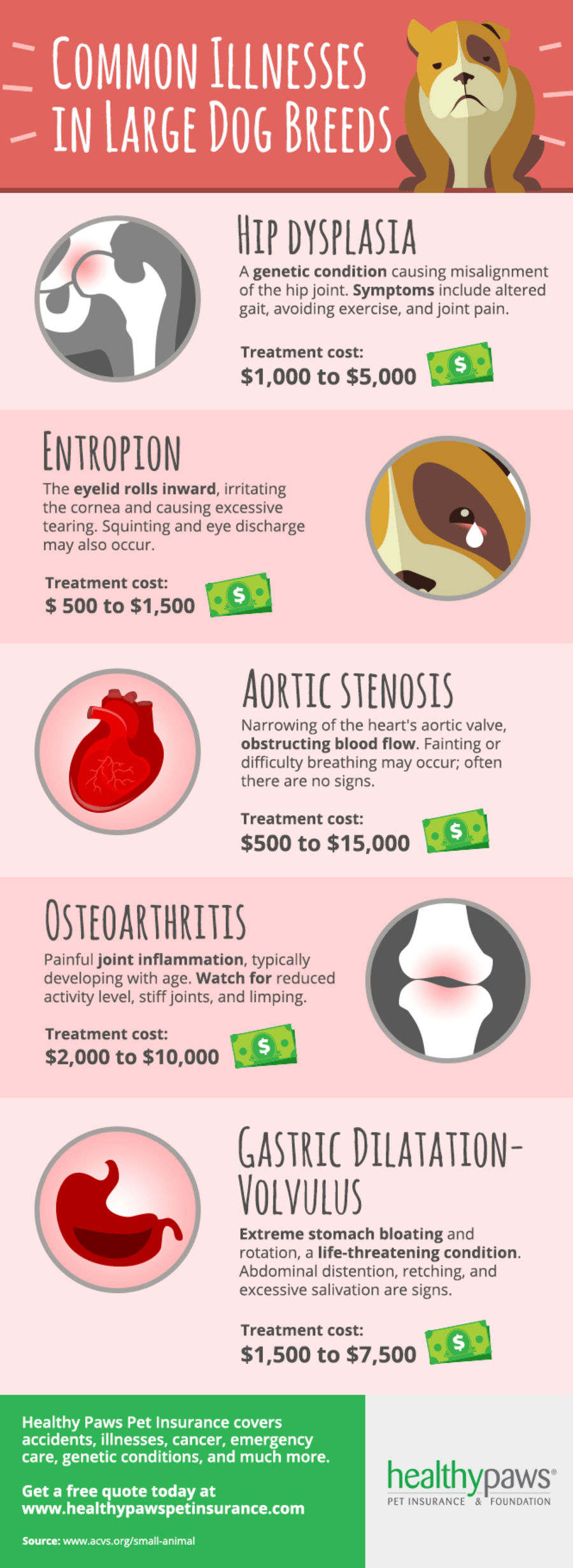Table of Contents
Large dog breeds are the gentle giants of the canine kingdom. Examples of large or so-called “giant” dog breeds include Great Danes, Pyrenees, and Irish Wolfhounds. These pups have plenty of love to give, but with these large dogs comes larger health issues, typically involving the joints or heart.
If you have one of these large breed dogs, pay close attention to your pet’s health and happiness, especially for senior pets. Any changes in activity level, gait, or breathing may indicate the presence of a medical condition that needs veterinary attention.
Hip Dysplasia
Frequently occurring in large dog breeds, hip dysplasia is a congenital condition causing misalignment of the hip joint and socket. According to the Cornell University College of Veterinary Medicine, hip dysplasia occurs in up to 50 percent of big dog breeds; Bernese Mountain Dogs, Golden Retrievers, German Shepherds, and Standard Poodles all have a higher prevalence of hip dysplasia.
The first sign of hip dysplasia in dogs is decreased activity level. As the disease progresses, joint pain increases; symptoms typically arise between four months and one year old. Dogs with hip dysplasia may “bunny hop” and also avoid running or climbing stairs, which aggravate joint pain.
If hip dysplasia is detected before 10 months old, the Orthopedic Foundation for Animals recommends a triple pelvic osteotomy, which can reverse early subluxation of the hip joint. This subluxation occurs when the head of the femur (thigh bone) becomes partially dislocated from its usual snug position in the socket of the hip joint.
Older pets may find success with a total hip replacement – a costly procedure not covered by all pet insurance policies. (We’re proud to say the Healthy Paws plan covers non-preexisting hip dysplasia in all pets enrolled before age six!)
In addition to surgical therapies, pain medications are often prescribed to reduce the pain and discomfort of hip dysplasia. Nutritional supplements, such as chondroitin and glucosamine, promote joint health. Physical therapy is also beneficial.
Because hip dysplasia is hereditary, it cannot be prevented in breeds that are genetically predisposed to developing the condition. However, keeping pups slim and trim, providing daily exercise, and feeding a nutritionally balanced diet promote good joint health in large dog breeds. Regular vet checkups allow your veterinarian to monitor your dog’s joints and start hip dysplasia treatment early if necessary.

Entropion
This painful medication condition is hereditary, causing the eyelid to roll inwards, irritating the eye. Entropion in dogs is not unique to large breed dogs, but is more common in larger dogs. Ectropion may also occur, where the eyelid rolls outwards.
If your dog has entropion, their eyes may excessively tear or blink and will appear red or inflamed. Pain leads dogs to paw at the affected eye, causing more damage.
Visit your vet for a diagnosis. Your vet will use a dye on your dog’s eyes to make any damage to the cornea visible. Entropion surgery is commonly used to correct the eyelid positioning and repair lacerations to the cornea. A “cone of shame” (Elizabethan collar) protects eyes post-surgery, which has a success rate of 90 to 95 percent, according to Michigan Ave Animal Hospital. Multiple surgeries may be required, but the prognosis for a full recovery is good in most pets.
Aortic Stenosis
Big dog breeds require big hearts to keep their blood pumping. Congenital heart conditions like aortic stenosis are common in large dogs, particularly Golden Retrievers. Large breed dogs like the Boxer, Newfoundland, and German Shepherd are also susceptible to the condition.
Aortic stenosis in dogs is the narrowing of the heart’s aortic valve, through which blood flows from the left ventricle to the aorta, and then to the rest of the body. This narrowing obstructs the flow of blood, forcing large dogs’ hearts to pump even harder. Symptoms include a cough, difficulty breathing, fainting, or exercise intolerance. Often there are no symptoms.
After determining the severity of the dog’s heart murmur (abnormal heart rhythm), further testing will be done to detail the condition of the heart. In severe aortic stenosis, surgery and/or beta-blocker drugs, which slow the heart rate, may be required. Pets with mild cases of the disease should avoid intense exercise, especially in hot weather, and stay slim.
Osteoarthritis
Also common in elderly pets, osteoarthritis is a degenerative joint disease – dogs’ joint cartilage decreases over time, causing intense pain due to bone-on-bone rubbing. There are several types of arthritis in dogs, some caused by cancer or infections; osteoarthritis arises in large dog breeds because of the high stress placed on joints.
Dogs suffering from osteoarthritis will limp as their joint pain increases. Bony growths often occur on joints, leading to swelling; in severe cases of osteoarthritis, joints will audibly grate when the animal moves.
Treatment of arthritis in dogs typically begins with non-steroidal anti-inflammatory drugs (NSAIDs) or steroids. The side effects of these medications can be rough on pets’ digestive systems, so they are not a long-term treatment method. Several types of surgery are effective for repairing or replacing the joint; amputation is considered in severe cases. Lifestyle changes are also recommended to further provide pain relief for dogs with osteoarthritis. Weight loss relieves pressure on pained joints, while glucosamine for dogs is a joint supplement often recommended by vets.

Gastric Dilatation-Volvulus
Also known as gastric torsion, this condition is most often seen in extra-large and deep-chested dog breeds due to the shape of their chests. Gas builds up in the stomach, which expands dangerously in large dogs’ deep chest cavities. Overeating or eating too quickly is thought to be a main culprit of excessive stomach gas; speedy eaters often gulp down a side of air with their meal. Danger happens when the stomach twists, obstructing blood flow by compressing blood flow – a life-threatening condition.
Retching, abnormal heart and breathing rates, excessive salivation, and a distended abdomen are the primary signs of GDV. As the vena cava, a large vein in the body, continues to be compressed, symptoms of shock, such as pale mucous membranes and unconsciousness, occur.
Emergency treatment focuses primarily on stabilizing the pet, decompressing the stomach, and reversing any torsion or twisting that occurred. Gastropexy, a surgical procedure during which the stomach is attached to the body wall to prevent twisting, is often performed in dogs with GDV.
With speedy treatment, large dogs have a good prognosis. Prevent GDV by monitoring your pet during meal times, making sure they don’t eat too quickly or too much at one time. Elevated food bowls help slow down eating.
The content is not intended to be a substitute for professional veterinarian advice, diagnosis, or treatment. Always seek the advice of your veterinarian or other qualified health provider with any questions you may have regarding a medical diagnosis, condition, or treatment options.
(Featured image via Flickr.com/tracyleephoto)









